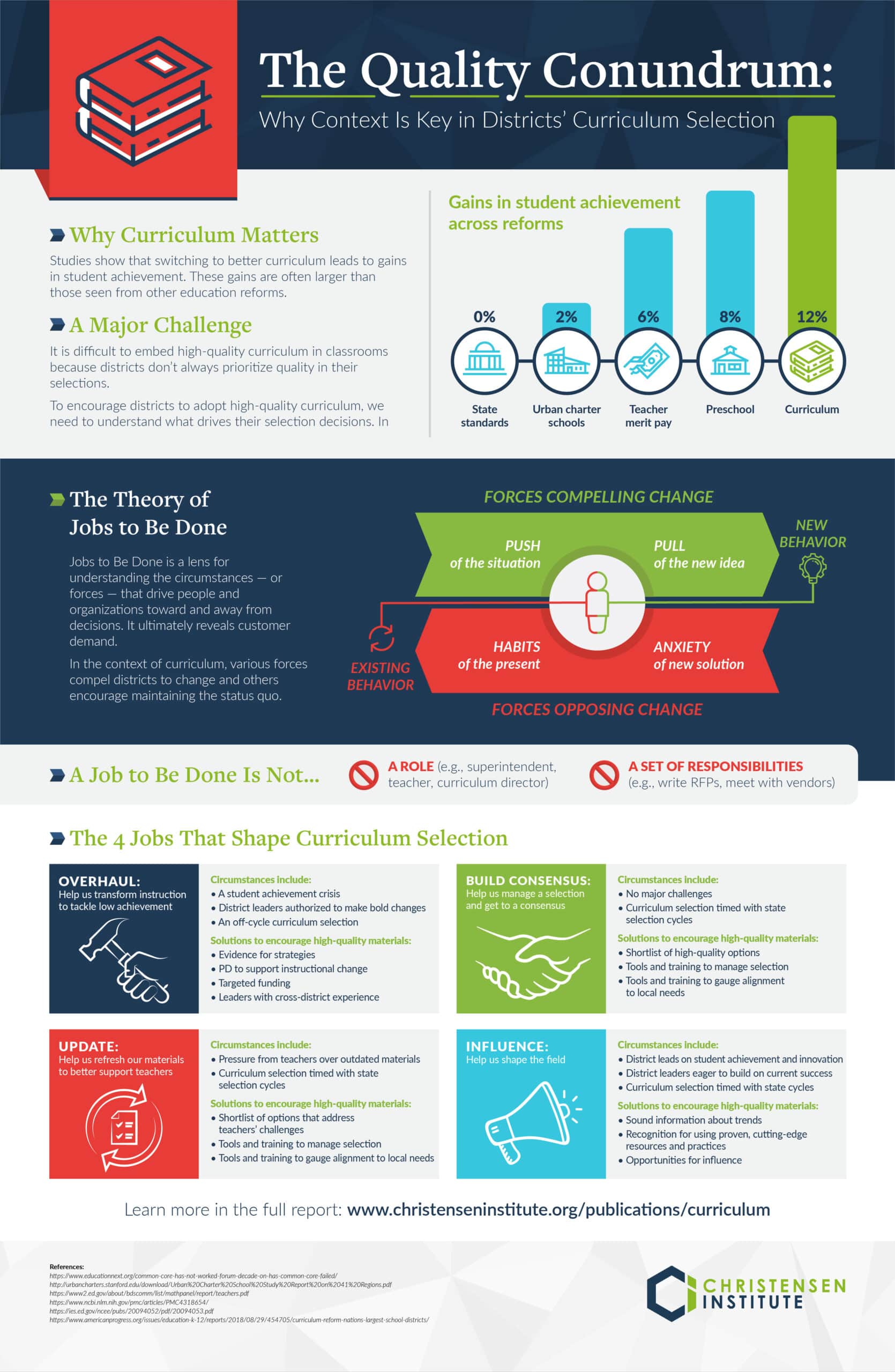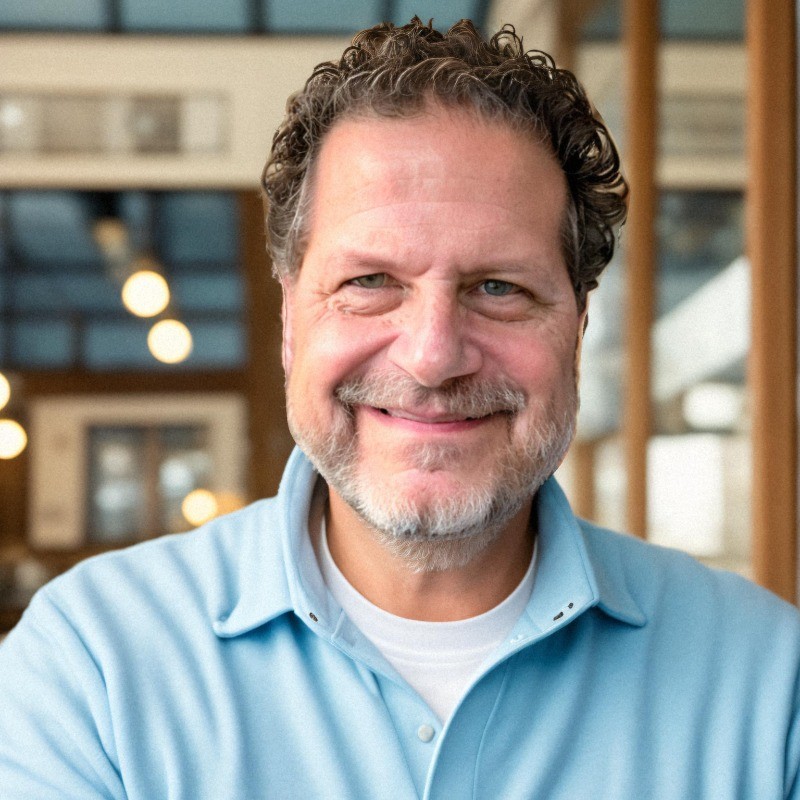Successful decision-making during uncertainty
A NOTE TO READERS
Last year, our team set out to understand how school district leaders in the US make curriculum selection decisions. We interviewed leaders using our Jobs to Be Done methodology and uncovered four “jobs,” or pathways, that explain why and how districts buy curriculum. Our plan was to publish these findings last March, but as our release date approached, COVID-19 closed schools across the country.
We initially pushed pause on sharing this research as we wondered how a study on curriculum selection would have any relevance until the world reached a post-pandemic state of normal. However, our conversations with education leaders over the last few months reveal an interesting pattern: The four Jobs to Be Done we uncovered in our curriculum research—Overhaul, Build Consensus, Update, and Influence—have striking similarities with how leaders have confronted their present challenges. With this brief, we aim to apply the insights learned from our curriculum research to support anyone struggling to lead a school system in today’s world.
In addition to this decision-making brief, see below for the full curriculum selection report compiled in March 2020.
Solving the curriculum conundrum
EXECUTIVE SUMMARY
A growing body of research reveals that better curricula can improve student outcomes. Notably, many of these studies find achievement gains that outpace those of other popular education reforms. Inspired by this body of evidence, a number of prominent stakeholders from across the education landscape have rallied to promote high-quality curricula as a key lever for advancing student achievement.
Nonetheless, these curriculum-focused efforts face a number of hurdles, one of which is that school districts often do not seem to prioritize quality as they make their curriculum selection decisions. Curriculum advocates have made important strides in signaling the excellent options available on the market and pressuring publishers to improve curriculum quality. But these improvements in the supply have not caused commensurate demand on the part of school districts. To increase the likelihood that districts adopt high-quality curricular materials, advocates need better insight into the factors that influence school districts as they make a curriculum selection decision.
Applying the Jobs to Be Done theory helps provide this much-needed insight by uncovering what causes people and organizations to adopt new products and services. All people have Jobs to Be Done in their lives—the progress they are trying to make as they strive toward a goal or aspiration within particular circumstances. We call these jobs because just as people hire contractors to help them build houses or lawyers to help them build a case, people search for something they can “hire” to help them when “jobs” arise in their lives.
Through interviews with school district leaders who recently led a curriculum selection effort, we uncovered four distinct jobs that characterize the drivers of districts’ curriculum selection decisions.
1. Overhaul: Help us transform instruction to tackle low achievement
2. Build Consensus: Help us manage a selection and get to consensus
3. Update: Help us refresh our materials to better support teachers
4. Influence: Help us shape the field
Understanding these Jobs to Be Done can aid efforts to steer districts toward quality materials by making clear that one-size-fits-all solutions for encouraging adoption of high-quality curricula are really one-size-fits-none. This paper aims to help curriculum proponents see how districts that ostensibly want the same product—quality curricula—are actually seeking very different solutions, and recommends ways to design solutions for districts in each of the four jobs. We hope that this research helps curriculum advocates think more broadly and strategically about how best to encourage adoption of high-quality instructional materials.





